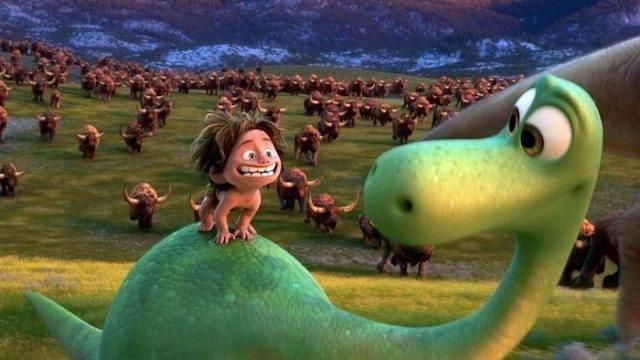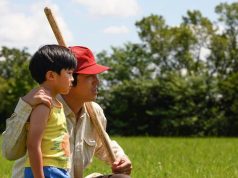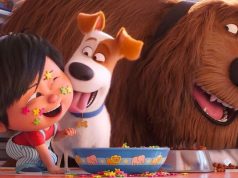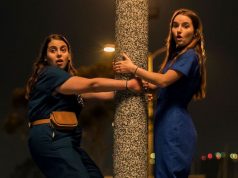
“The Good Dinosaur” is Pixar’s 16th film, and it might be its most peculiar. It has a brazenly simple story, though the five (!) people credited with conceiving that story are evidence of the movie’s troubled production and frequent rewrites. Originally scheduled for release in 2014, it was pushed back and had a new director (Peter Sohn) assigned when it became clear to Pixar’s creative heads that the story wasn’t working. Most of the cast was replaced, too.
None of which should be held against the movie, of course. Plenty of excellent films came from circumstances just as chaotic. But it’s relevant when, as in this case, the finished product is … off. Not bad, just not quite right. And certainly not up to Pixar’s usual high standards of crisp writing and efficient storytelling. Were it not for the photorealistic animated backgrounds, you could mistake this for a cheap straight-to-DVD knockoff.
It’s set in an alternate reality where the dinosaurs weren’t wiped out by an asteroid and were thus still around millions of years later, when mammals and birds started appearing. Our hero is Arlo (voiced by Raymond Ochoa), a young apatosaurus (they’re like brontosauruses) who lives with his parents and two siblings on a farm.
Yes, a farm. Dinosaurs are farmers here. They grow corn and raise chicken-like prehistoric birds. I don’t know how they do this without thumbs. Don’t worry about it.
The point is, Arlo is a timid fellow who feels he doesn’t measure up to his big, brave family members. He gets his chance to prove himself when he’s separated from them and must find his way home again. In the process, he befriends Spot (Jack Bright), a dog-like human boy child who is himself without a family.
Arlo and Spot meet a variety of off-kilter characters in their travels, including a neurotic triceratops, a group of storm-worshipping pterodactyls, and a family of T. rexes who own (?) a herd of longhorn buffalo. (The papa T. rex is voiced by Sam Elliott, filling a need we didn’t realize we had.) Judging by the landscape, this is the American Southwest, which is presumably why a lot of the dinosaurs speak with cattle ranchers’ accents. (The sole human character, Spot, doesn’t speak at all, but communicates with grunts and howls.)
The antagonist in the story is Nature itself, with her floods, storms, and predatory creatures. The film is shockingly, humorously matter-of-fact about animals’ tendency to eat one another. The lesson to be learned is that everyone’s afraid sometimes (“If you ain’t scared of a croc bitin’ you in the face, you ain’t alive,” says T. rex Sam Elliott), and that it’s good to have friends and family to help you.
Pixar has spoiled us with a series of movies that have simple stories but weighty, complex themes. That’s why adults have responded to them as well as kids have. But “The Good Dinosaur” is rudimentary, a bare-bones story with basic, uncomplicated themes, and it’s executed without the usual flair. It’s occasionally funny, sweet, or exciting, but never to the degree that you’d put a “very” in front of the adjective. Often it’s forlorn.
But let me mention the artwork again. The canyons, rivers, and prairies that are the film’s setting are the most astonishingly realistic animated images I’ve ever seen. There were times when you’d have had no trouble convincing me that we were looking at actual live film, with cartoon dinosaurs drawn in. I don’t know how these nerds do it, and how they keep getting better at it with each passing film. Here’s hoping the next entry in the Pixar canon has a story and characters that are worthy of it.
B- (1 hr., 40 min.; )





